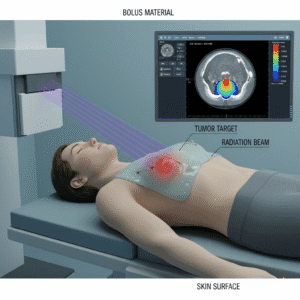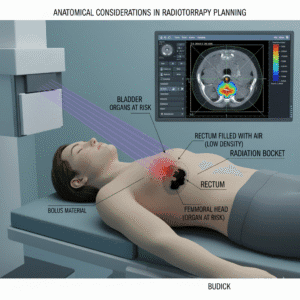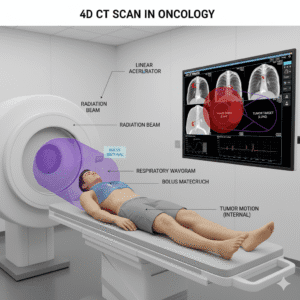
Cancer Info
Skin Cancer
What is the incidence of skin cancers and melanoma in India?
Skin cancers, including melanoma, are increasingly recognized in India, with melanoma being less common than non-melanoma skin cancers. The incidence of melanoma is about 1-2 per 100,000 people in India, while non-melanoma skin cancers, particularly basal cell carcinoma and squamous cell carcinoma, are more frequent. Rising awareness, improved diagnostic facilities, and changes in lifestyle contribute to these statistics.
What are the main risk factors for developing skin cancer?
Risk factors include:
UV Radiation: Prolonged exposure to sunlight, especially without protection.
Skin Type: Fair-skinned individuals are at higher risk.
Family History: A personal or family history of skin cancer increases risk.
Age: Risk increases with age, although melanoma can occur in younger individuals.
Immune System Suppression: Conditions or medications that weaken the immune system can elevate risk
How is skin cancer screened?
Screening typically involves:
Self-Examinations: Regularly checking your skin for new or changing moles or spots.
Dermatological Examinations: Dermatologists use special tools to closely examine skin lesions.
Biopsy: If a suspicious lesion is found, a biopsy may be performed to determine if it is cancerous.
What are the signs and symptoms of skin cancer?
Common signs and symptoms include:
New Growths: Moles or spots that change in size, shape, or color.
Itching or Bleeding: Any mole or skin lesion that itches, bleeds, or becomes crusty.
Non-Healing Sores: Sores that do not heal or take a long time to heal.
Changes in Existing Moles: Variations in color or border irregularity.
Does smoking or alcohol increase the risk of skin cancer?
While smoking is more closely associated with other cancers, it may contribute to skin damage and increase the risk of squamous cell carcinoma. Alcohol consumption has not been directly linked to skin cancer, but excessive drinking can negatively impact overall health and immune function.
How does UV radiation affect the risk of skin cancer?
UV radiation from the sun or tanning beds is the primary cause of skin cancer. It can damage the DNA in skin cells, leading to mutations. Over time, this damage accumulates and increases the risk of developing skin cancers, including melanoma.
What are the benefits of using sunscreen?
Sunscreen provides several benefits:
Protection Against UV Radiation: Reduces the risk of skin damage and skin cancer.
Prevention of Premature Aging: Helps maintain skin elasticity and prevent wrinkles.
Broad Spectrum Protection: Choose a broad-spectrum sunscreen that protects against both UVA and UVB rays, with an SPF of at least 30.
What investigations are done to diagnose skin cancer?
Investigations may include:
Physical Examination: A thorough examination of the skin by a healthcare professional.
Biopsy: Removing a small sample of skin for laboratory testing.
Imaging Tests: If cancer spreads, imaging like CT scans or MRIs may be used to check for metastasis.
How is skin cancer managed based on its stage?
Management depends on the cancer type and stage:
Early Stage: Surgery to remove the cancerous lesion may be sufficient.
Advanced Stage: Treatment may involve a combination of surgery, chemotherapy, immunotherapy, and radiation.
What are molecular tests, and why are they important?
Molecular tests analyze the genetic makeup of the tumor. They can identify specific mutations that may be targeted by certain therapies, helping to personalize treatment and improve outcomes.
What is targeted therapy for skin cancer?
Targeted therapy uses medications designed to attack specific cancer cell pathways or mutations. For melanoma, targeted therapies like BRAF inhibitors can be effective for patients with specific genetic changes.
When does chemotherapy help in skin cancer?
Chemotherapy involves using drugs to kill cancer cells. It is typically used for advanced melanoma or when the cancer has spread. Side effects may include nausea, hair loss, and fatigue, but the treatment plan is individualized.
When is immunotherapy used in treating melanoma?
Immunotherapy helps the body’s immune system recognize and attack cancer cells. Treatments like checkpoint inhibitors (e.g., pembrolizumab) have shown significant success in treating advanced melanoma, improving survival rates for many patients.
What is the role of radiotherapy in skin cancer treatment?
Radiotherapy uses high-energy rays to kill cancer cells. It may be used:
After Surgery: To eliminate remaining cancer cells.
For Palliative Care: To relieve symptoms of advanced disease.
For Non-Surgical Candidates: As a primary treatment option.
What is the role of surgery in managing skin cancer?
Surgery is often the primary treatment for localized skin cancers. It involves removing the cancerous tissue along with some surrounding healthy skin. In more advanced cases, reconstructive surgery may be necessary for cosmetic reasons.
What are the advantages of Radiotherapy Over Surgery in Skin Cancers ?
Cosmetic Outcomes:
Less Tissue Removal: Radiotherapy typically does not require the excision of large areas of skin, which can lead to better cosmetic outcomes. Patients often have less scarring compared to surgical removal.
Preservation of Surrounding Tissue: Because radiotherapy targets the tumor while sparing healthy tissue, the overall appearance of the skin can be maintained.
Healing Time:
Faster Recovery: Radiotherapy usually results in shorter recovery times than surgical procedures, which often require sutures and a longer healing process. Patients can return to their normal activities more quickly.
Suitability for Older Patients:
Minimally Invasive: For older patients or those with significant health issues, radiotherapy is often safer and less invasive than surgery, reducing the risk of complications associated with anesthesia and surgical recovery.
Lower Risk of Surgical Complications: Patients with comorbidities may face higher risks during surgery, making radiotherapy a more suitable option.
Outpatient Procedure:
Convenience: Radiotherapy is typically delivered on an outpatient basis, allowing patients to receive treatment without the need for hospital admission. This can be more convenient and less stressful for patients.
Targeted Treatment:
Precision: Advances in radiotherapy, such as CyberKnife or SBRT, allow for highly targeted radiation that minimizes damage to surrounding healthy tissue, making it a favorable option for sensitive areas, such as the face or neck.
Reduced Anesthesia Risks:
No Need for General Anesthesia: Since radiotherapy does not involve surgery, patients avoid the risks associated with anesthesia, which can be significant, especially in older adults or those with existing health issues.
Palliative Care:
Symptom Relief: For advanced skin cancers, radiotherapy can be used to relieve symptoms, such as pain or bleeding, without the need for invasive procedures.
Repeatability:
Multiple Treatments: Radiotherapy can often be administered multiple times if necessary, allowing for ongoing management of the cancer, whereas surgical options are generally one-time procedures.
What are the indications and benefits of CyberKnife radiosurgery or SBRT for skin cancer?
CyberKnife or SBRT may be used for:
Inoperable Tumors: When surgery is not an option due to location or patient health.
Localized Recurrence: For tumors that come back after initial treatment. Benefits include:
Precision: Targeting tumors accurately while sparing healthy tissue.
Fewer Sessions: Often requires fewer treatment sessions compared to conventional radiation.
What should patients expect during follow-up appointments?
Follow-up appointments are essential for monitoring recovery and detecting any signs of recurrence. These may involve:
Physical Exams: Regular checks of the skin for new or changing lesions.
Imaging Tests: If indicated, to monitor for any signs of metastasis.
Education: Discussing lifestyle changes and skin care.
How do genetics play a role in skin cancer?
Certain genetic mutations can increase the risk of developing skin cancer. Individuals with a family history of melanoma or related syndromes, like xeroderma pigmentosum, should consider genetic counseling and testing to assess risk and management options.
How can diet and nutrition support skin cancer patients?
A balanced diet can support overall health and recovery. Focus on:
Fruits and Vegetables: Rich in antioxidants that help combat oxidative stress.
Healthy Fats: Sources like fish and nuts can support skin health.
Hydration: Staying well-hydrated is crucial for skin health.
What should patients know about cosmesis and rehabilitation after skin cancer treatment?
Cosmesis refers to maintaining or restoring appearance after treatment. Rehabilitation may include:
Reconstructive Surgery: For restoring appearance after tumor removal.
Counseling: Emotional support for body image concerns.
Skincare: Guidance on skincare routines post-treatment to promote healing.



